Pressure vessel heads, often referred to as end caps, are critical components that close off the ends of a pressure vessel. Their primary function is to isolate the internal medium of the pressure vessel from the external environment, ensuring the vessel's integrity and sealing. Typically, these heads are installed at both ends of cylindrical pressure vessels and are welded to the pipeline to serve as the terminal closure of the container. These heads are widely used in industries such as petrochemicals, energy, research, and military, playing an essential role in maintaining the safety and efficiency of operations.
Types of Pressure Vessel Heads
Pressure vessel heads can be categorized into several main types based on the shape of their external surface shapes, each with unique structural characteristics and applications to meet the needs of different working conditions.
1. Dished Heads
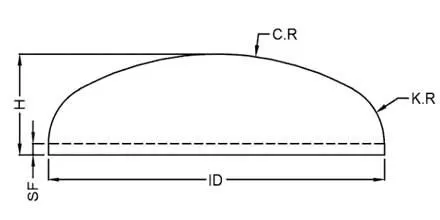
Dished heads have a convex outer surface, mainly including types such as hemispherical, elliptical, disc, and seamless spherical heads. These heads have excellent load-bearing performance, especially when subjected to internal pressure. Compared to other forms of heads, spherical heads have higher structural stability and pressure resistance, and are therefore widely used in high-pressure vessels. They require a smaller thickness under the same diameter and pressure, helping to save material costs. As a type of dished head, the elliptical head has mechanical properties second only to the hemispherical head, suitable for medium and low-pressure vessels, and the manufacturing difficulty is moderate.
2. Conical Heads
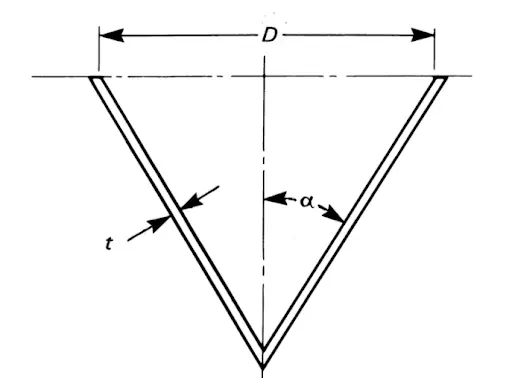
The surface of conical heads is conical. These heads can uniformly change the flow rate when the medium passes through, suitable for discharging viscous liquids and materials containing solid particles. The mechanical properties of conical heads are relatively poor, and there will be a large discontinuity stress at the junction with the cylinder or pipe due to the shape change. To reduce stress, conical heads are usually designed with a flanged structure or locally thickened structure at the large or small end of the cone shell, enhancing the overall durability and safety.
3. Flat Heads
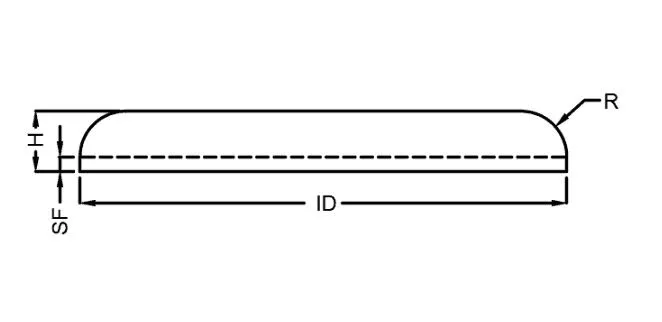
The surface of flat heads is flat, mainly used for sealing the ends of vessels and pipelines. Flat heads can be formed by two methods: stamping and spinning. Stamped flat heads have high flatness but use more material and are more expensive; spun flat heads, although slightly less smooth, have higher material utilization and lower production costs, suitable for general sealing needs.
4. Composite Heads
Composite heads are made up of a combination of various shapes, usually designed to meet specific strength and usage requirements. For example, the composite bottom head with a convex inward not only provides good structural strength but also meets the needs of safe use.
Features and Applications of Common Pressure Vessel Heads
Pressure vessel heads are an important part of pressure vessels, responsible for sealing the ends of the vessels and ensuring their sealing and structural strength. Based on their shape and structural characteristics, different types of heads have their own advantages and application scenarios in practical use. Here are the features and applications of common pressure vessel heads.
1. Hemispherical Head
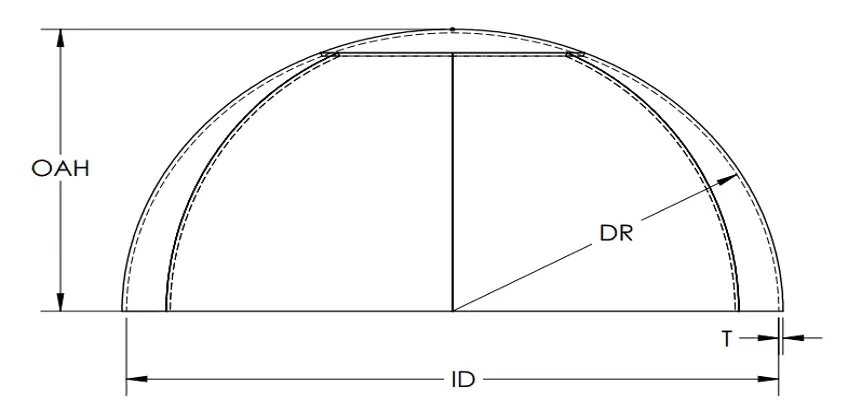
Main Features
Superior Load-Bearing Performance: Due to its perfect spherical structure, the hemispherical head can evenly distribute internal pressure, greatly reduce stress concentration, and provide excellent structural stability.
Material Saving: Under the same diameter and pressure conditions, the hemispherical head requires less material thickness, helping to reduce material costs.
Specific Applications
High-Pressure Vessels: With its outstanding load-bearing performance, the hemispherical head is widely used in high-pressure environments for vessels that need to withstand large internal pressures.
2. Elliptical Head
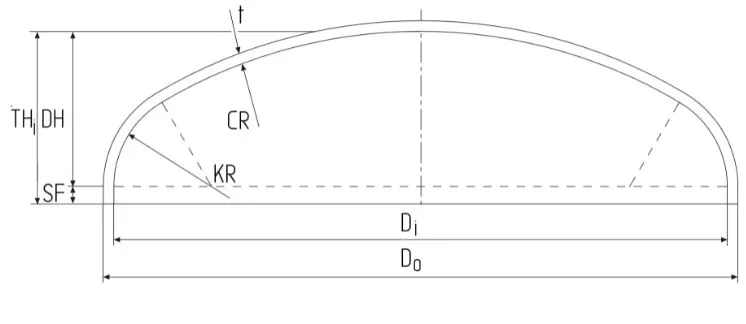
Main Features
Excellent Overall Performance: The elliptical head has load-bearing performance second only to the hemispherical head but better than the disc head, with good mechanical properties.
Moderate Manufacturing Difficulty: The depth of the elliptical head is between that of the hemispherical and disc heads, and the requirements for equipment and molds in the manufacturing process are moderate, with a more reasonable cost.
Specific Applications
Medium and Low-Pressure Vessels: The elliptical head is widely used in medium and low-pressure vessels, especially suitable for common medium pressure conditions in industrial production, such as storage tanks and reactors.
3. Disc Head
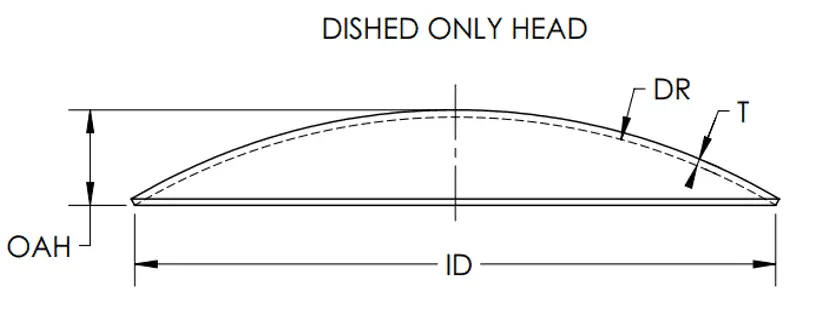
Main Features
Simple and Practical: The disc head consists of a spherical surface, a cylindrical straight edge, and a transition part, with a relatively simple structure and easy to manufacture.
Low Material Consumption: Due to its shallow depth and simple geometric shape, the disc head consumes less material in the manufacturing process, resulting in lower costs.
Specific Applications
Low-Pressure Vessels: The disc head is commonly used in low-pressure vessels, suitable for applications with lower load requirements and those that require an economical manufacturing solution.
In summary, pressure vessel heads are an important part to ensure the safe operation of pressure vessels, with a variety of types, different functions, and a wide range of applications. Choosing the appropriate head form according to specific process requirements and pressure conditions can maximize the safety and economy of the vessel. With the continuous advancement of manufacturing technology, the design and performance of heads are also being continuously optimized, providing a solid guarantee for the reliable operation of pressure vessels.

 English
English Español
Español русский
русский